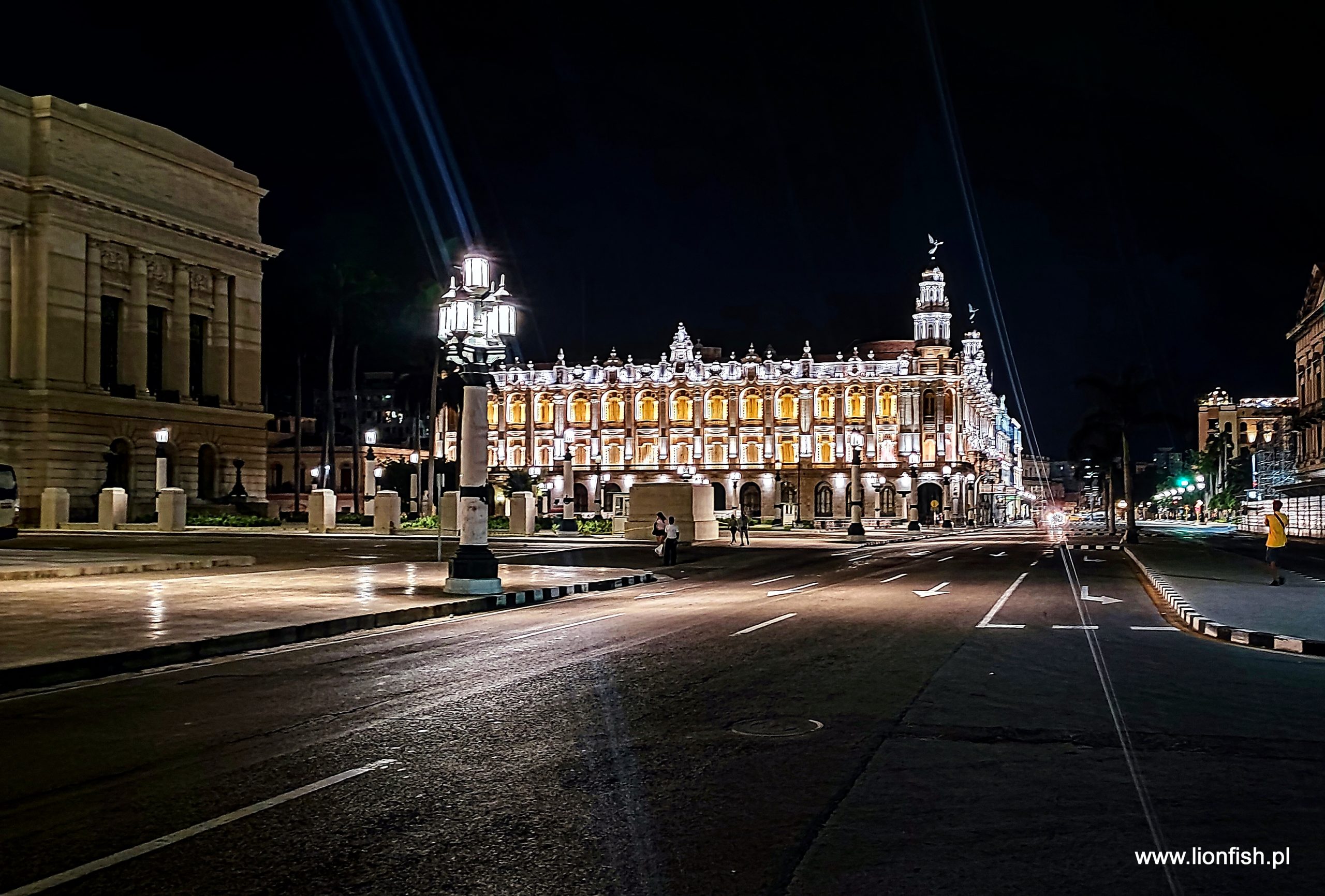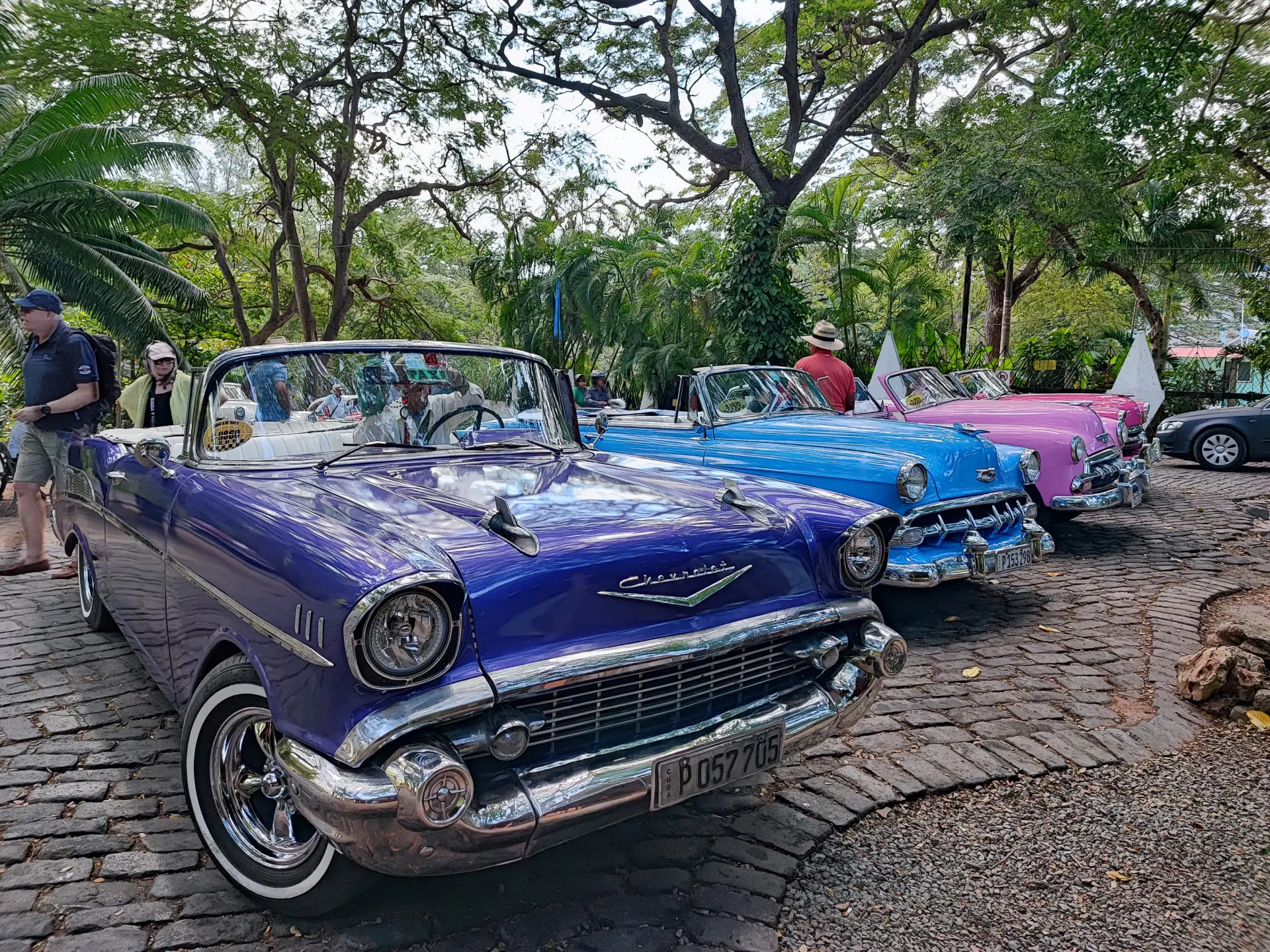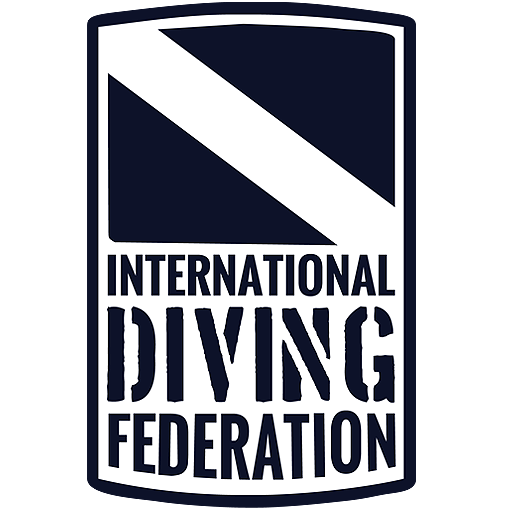When I arrived here, I felt like a time traveler. I went back to the 70’s of the last century. I saw empty shelves, lack of basic products, such as bread, drinking water, medicines. I saw long-forgotten long lines for everything. I exchanged money with “local man in business”, and I reported my desire to buy a phone card before arrival, thanks to which our guardian took the queue for us and the formalities took only one and a half hours, not six.
This is Cuba.


The largest island in the chain of the Greater Antilles with a very rich history. One of the green jewels in the chain of Caribbean islands. Surrounded by the blue sea, sun-drenched all year round, with high air humidity, Cuba is drowning in a sea of juicy, lush greenery. Initially inhabited by Indian tribes, in 1492 discovered by Christopher Columbus and from 1511 annexed by Spain. After 1959, when Fidel Castro seized power, Cuba adopted the communist system. The remains of colonial buildings, palaces and streets are visible all over the island. Cities in Cuba are an example of a beautiful decay and elegant dying of an old culture. I want to quote Zorba: “What a beautiful disaster!”
La Habana Vieja
We landed in Havana. The coach transported us to the nice hotel “Palacio de los Corredores”. Due to the late hour, we had to postpone the purchase of phone cards, rum or money exchange until the morning, but we decided to take a short walk. We immediately came across tempting cafes and musicians hanging around among the guests. On the streets of the city, hundreds of beautiful vintage cars are the first thing that catches the eye. Such specimens in other places in the world can only be seen in automotive museums, here they drive at their best, serving the Cubans as a daily means of transport.

The next day, after breakfast, we set out to arrange the necessary errands. You have to remember that in shops selling specialties such as alcohol and cigars you have to pay with dollars or euros, Cuban pesos are accepted reluctantly and with a twisted nose. It is worth taking this into account when exchanging money. Another thing worth knowing is that you will get a much better exchange rate at a money changer on the street than at state exchange offices, so it is not worth exchanging money right away at the airport.



Finca la Vigia – Hemingway estate
Hemingway lived there from 1939 to 1960. It was here that the novel “For Whom the Bell Tolls” and the short story “The Old Man and the Sea” awarded in 1951 with the Pulitzer Prize were written. There is now a museum dedicated to the writer.


Unfortunately, it was impossible to go inside the house to breathe its atmosphere, read the titles of books standing in rows on the shelves, glance at Hemingway’s notes on the bathroom wall, or see paintings and sculptures up close. It’s a shame because it’s definitely a “property with a soul”.
Trinidad
One of the oldest cities in Cuba, founded in the 18th century, is characterized by low, one-story buildings. Tile-roofed houses painted in various colors form long, compact rows along cobbled streets. The houses remember the times when the city was the main center of the sugar trade in the New World. Residents cannot change anything in their appearance and interiors, the only renovation they can afford is painting the facade. So they paint with true Cuban fantasy in all the colors of the rainbow.


The appearance of the houses, squares and alleys brings to mind the 18th century, and the music bands playing in the squares under huge, several-hundred-year-old acacia trees are immediately associated with the first half of the 20th century. Local artists and craftsmen sit on the high curbs, displaying their wares for sale right on the street or on the lawn. Vendors draped with braids of garlic, onions, peppers and herbs walk the streets. Here, history walks the streets of the city, inviting passers-by to dance.

In the evening, the whole group goes to the Casa de la Trova club to dance and listen to beautiful Cuban music live. Salsa, rumba and chacha do not let you sit at the table. An interesting fact is also the age of the most active dancers in this club. On the dance floor, the leaders are men and women, whose age we estimated to be between 70 and 80 years old. Colorful dresses, bright shirts, waistcoats and elegant hats reign supreme.
Playa Giron and Bay of Pigs
Playa Giron was named after its French pirate Gilbert Giron. It is located in the Bay of Pigs in one of the world’s largest wetlands, Ciénaga de Zapata, on the southern coast of Cuba. Playa Giron is also the site of the final victory of Fidel Castro’s army over the 72-hour CIA-led invasion of Cuban immigrants in 1961.

We pack the equipment into the car and go to the sea, where we plan to do two dives in a place called El Tanke. We enter the water from the shore and dive into the incredibly azure depths. The water temperature reaches 28 degrees, visibility is very good, the bottom is covered with white sand, as far as the eye can see, there are colorful clusters of corals and sponges. The reef is different than in Egypt, less rich but the colors are more vivid, more saturated. Corals and sponges grow to enormous sizes. Some sponges could be swamped by an adult human.


There are also very rare black corals on the reefs around Cuba. The richness of shapes and colors is delightful. The walls of the reef are intersected by numerous gorges, tunnels and caverns. However, there are relatively few fish in this fabulous garden. You can also find large crabs and lobsters, and small shrimps are hidden in the corals. Most of Cuba’s coastline is undeveloped. The lack of industrialization and industrialization of these areas results in wonderful, unspoilt reefs. There are hardly any currents. Visibility is fantastic. This place is perfect for both beginners and advanced divers as well as for lovers of underwater photography.


Cave of the Czechoslovak woman Ilona
Cuban caves were explored by a group of cave divers from Czechoslovakia in the 1960s. Most of the caves here called “casimba” require skills and cave qualifications. We will visit two of these places during our stay. As the first we will see Casimba Ilona – named after the wife of one of the Czech explorers.
We drive up to a place where the blue sea spreads on one side of the parking lot, and the impenetrable thicket of the tropical forest darkens on the other. A comfortable, gravel path leads to the lake from which you enter the cave. We turn the equipment and jump into the water. In this place, as in the Mexican cenotes, you can observe the phenomenon of a halocline lasting around 10 meters. The temperature reaches 28 degrees Celsius. About 20 meters, fairytale-looking streaks of hydrogen sulphide suspension appear. Green vines hang from the walls and boulders, the surrounding stones are covered with moss-like algae. A landscape like a fairytale forest. At a depth of about 25-30 meters, the tunnel exit opens. We go single file along a narrow black corridor. The walls of the tunnel climb high, the ceiling of the cave runs at a depth of 39 meters. Below us lies a bright, sandy bottom. At its deepest point, the cave reaches 115 meters.


From the entrance there is a railing, leading us deeper. In complete darkness and blackness, the only bright spots are the shafts of light from our flashlights. Through a dark, majestic tunnel with black walls, we reach a wider chamber, where we can turn around. The entire tunnel is 450 meters long and ends in another hole called Casimba Dagmar. As we reach the exit, the tunnel lights up with a beautiful play of blue-green light from the surface. This is a great time to take some photos.
Casimba del 35 aniversario de la sociedad espeleologica de Cuba
This time we are planning a cave with the proud name of Casimba del 35 Aniversario de la Sociedad Espeleologica de Cuba. This cave has been explored to a depth of 70 m and tentatively named by the explorers “Road to Hell”. The coach stops on the highway, there is no parking lot, no facilities, nothing, not even a shoulder. Only a narrow path leading to the selva. We unpack the equipment and set off on a fairly long way through the thicket. From the outside, it looks similar to a Mexican cenote. The area is completely wild, you have to be careful where to put your feet because there is not a single piece of even surface here, everything is cut with sharp rocks and overgrown with huge tree roots.


I plunge into the warm, transparent depths and I fall in awe! The rays of the sun illuminating the basin create beautiful light fans breaking into colorful rainbows on the rock walls covered with dense vegetation. The halocline remains at a depth of 8 meters. Two tunnels lead from the basin. First we go to the right. The walls, very similar to the previous cave, are dark, here and there you can see dripstones of brown color. There is no such wealth of stalactites and stalagmites here as in the cenotes. The ropeway leads us deep into a beautiful, dark cave. After about 10 minutes of leisurely sailing, we reach a place half-covered by a huge rock wall. Here the fixed line ends its course, and the cave ends with a solid rock several meters further. Well, there is a sigh and a polite return to your place. We return to the basin and after a while enter the tunnel on the other side. This corridor is wider and richer in dripstone forms. The entire wall to my right is covered in light and dark brown growths. It looks as if the water for many centuries flowed slowly down the cave wall, carving in stone and building amazing patterns. From here you can sail further inland. This is where the “Stairway to Hell” begins. We return to the basin and slowly, in accordance with the safety rules, we start to ascend.


Bay of Pigs – Mar
Rafa Mar impresses with its richness of forms and colors. We reach a small wreck lying at 25 meters and then turn back to shallower water. The wrecks lying at the bottom of the Bay of Pigs are probably vessels that took part in the famous 1961 invasion. Diving in the sea is very simple and friendly even for beginners. The reefs are no more than 100 meters from the shore, there are no currents and there is excellent visibility all year round. The coral reef is cut by numerous channels, gorges and small caverns, overgrown with huge hard and soft corals as well as massive sponges of the type of tubulars, vase sponges and red tree sponges.


Bay of Pigs – Punta Perdiz
This time we are going to a place called Punta Perdiz, where we dive to a depth of 25 meters. We’re looking at another shipwreck from the Bay of Pigs invasion. Guides should talk about it during briefings, then watching the wreck would be a much more interesting experience. Meanwhile, I have the impression that the diving center crew works here like everyone else – they have a warm job, set working hours and the minimum they do. Actually, you can’t fault anything, but there’s not a bit of personal involvement in them. This is what it usually looks like if you can only work in a government job for a monthly, usually unexciting salary. Pity.


Boca de la laguna del tesero
During our stay in Playa Giron, taking advantage of the fact that we are in the largest swamp areas in Central America – Ciénaga de Zapata, we go to the Boca de la Laguna del Tesero national park, where we sail on huge backwaters by motorboat. The wetlands are home to 175 species of birds and over 30 species of reptiles. Here you can observe crocodiles, turtles, snakes and lizards, pelicans, parrots, herons, woodpeckers, vultures, eagles and flamingos. Plant lovers can find as many as 900 endemic species here.

This delicious trip in the bosom of nature is interrupted by a stop on one of the islands of the Guama region located on the largest lake in Cuba, Laguna del Tesero. The entire island is a monument-museum commemorating the annihilation of the Taino tribe during the Spanish conquest in the 15th century. It’s a beautiful and sad place.


Viñales
The Valle de Viñales is a great place to grow tobacco. Traditional methods of production of the famous Cuban cigars surrounded by the insanely beautiful landscape of the Mogoths make Viñales probably the most picturesque stop of our trip.
At 6.30 in the morning I go out onto the terrace and I sit down in awe! The rising sun illuminates with a golden-pink glow visible in the distance, the peaks of the Mogots covered with tropical forest, in a valley surrounded by hills, over a pale pink lake of mist, the roofs of houses, towers and churches covered with red tiles and the crowns of the tallest trees rise above the pale pink lake of fog. Above them, the dark silhouettes of birds are circling. This is a fairy tale!

Fat Maria

Maria la Gorda or Fat Maria owes its name to a woman who, according to legend, took care of the pirates’ shelter here, ran a tavern and dressed their wounds. After her death, the pirates buried her body with the treasure from their plundering expeditions. To this day, no one has found Fat Mary’s grave. The resort is located on the westernmost coast of the island, surrounded by unspoiled wild nature, right next to a beautiful white beach.


The resort itself is not very impressive, but it is an oasis of peace, on the one hand, sheltered by a wild selva, and on the other, protected by the catchment of the Caribbean Sea and the Gulf of Mexico in one of the most beautiful places in the world. A small, well-equipped diving base for Cuban conditions offers daily departures to the nearby reefs in a comfortable boat adapted for divers. We spend two days diving on the local coral reefs, one of the most protected areas in Cuba. We visit coral formations and reef walls interspersed with numerous fissures, canyons and caves. There are many species of corals and sponges among which there are thousands of reef fish, barracudas, horse mackerel, snappers and rays. You can also meet reef sharks, whitetip and moustache sharks, skittish eels, green moray eels, huge crabs, filigree shrimps, turtles and colorful lobsters. An interesting fact is the colonies of very rare black corals.


After diving, we walk along a wild, unguarded beach with snow-white sand. The beach abounds in beautiful washed-up shells of giant lionfish, fragile shells of sea urchins, starfish and lots of different pieces of coral reef. Among these sea jewels lie coconuts and dried giant leaves from palm trees growing on the beach. You would like to pick up beautiful specimens, but you must remember that transporting coral reefs and shells across the border of the European Union is prohibited and may result in a high fine. It is with regret that we leave the beautiful colorful shells to the little crabs hiding in them.
That’s what Cuba is like.
This entry is a summary of the full report on the website www.lionfish.pl, we encourage you to read it in full.
About the author:

Anna Paszta – Pharmaceutical Processes Technologist by education, trader by profession, diver and traveler by passion. He has been diving since 2011, and for 10 years as a professional, he has been infecting new generations of lovers of the deep sea with his passion.
Initially, she worked in diving centers as a divemaster and instructor, and in 2015, together with her husband, she founded her own diving school “Lionfish” in Pruszków near Warsaw. Since then, she has completed hundreds of successful diving trainings and, together with the students, has made many interesting trips to the farthest corners of the world. She is most successful in initial training, and her hobby is working with diving youth.
Photos: Anna Paszta, Anna Myśkiewicz, Sebastian Dobrowolski



